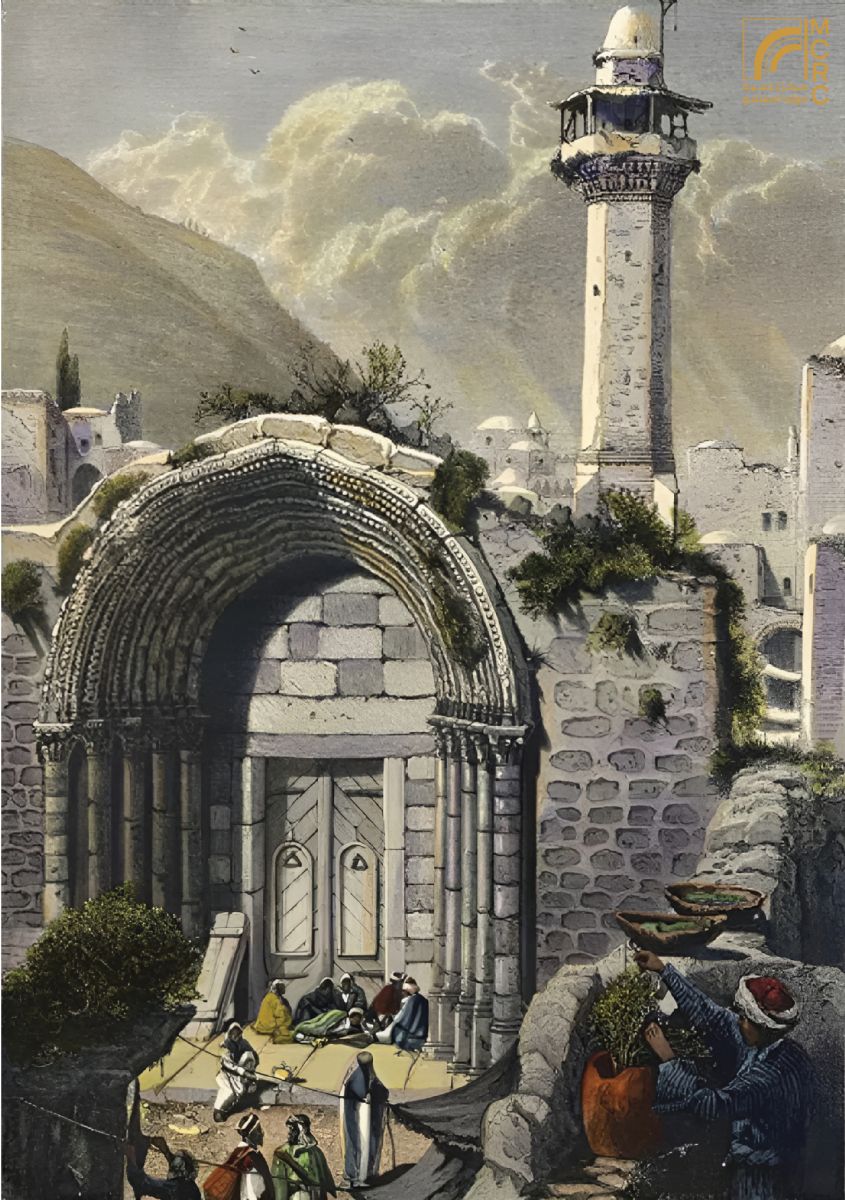
The picture was painted by the artist and historian Harry Fenn in 1881AD, and was curated from his book (Picturesque Palestine, Sinai, and Egypt)
The Great Salah al-Din Mosque in the eastern part of the Old City dates back to the Roman period, where it was originally known as a basilica. It later transformed into a church during the Byzantine period and then became a mosque after the Islamic conquest of the city.
The Basilica
Archaeological studies have proven that the Great Salahiyyah Mosque was built on the ruins of a Roman Basilica. The term first appeared in Latin in the 2nd century BC, and its origin comes from Greek, meaning "the king's hall and throne" or "the royal hall."
During the Roman period, basilicas were constructed near markets and main roads for purely commercial purposes. Later, they were used as courthouses where trials and legal proceedings were held, and deals and contracts were validated. After the spread of Christianity, they were repurposed as places of worship due to their spacious interiors, suitable for prayers and religious rituals.
الصورة رسمت من قبل الفنان والمؤرخ هاري فين عام 1881م وهي مقتبسة من كتابه ( Picturesque Palestine, Sinai, and Egypt)
الجامع الصلاحي الكبير في المنطقة الشرقية من البلدة القديمة يعود البناء للفترة الرومانية، حيث كان معروف كبازيليكا ومن ثم تحول لكنيسة في الفترة البيزنطية، ومن ثم مسجد بعد الفتح الاسلامي للمدينة.
البازيليكا
اثبتت الدراسات الاثرية ان الجامع الصلاحي الكبير يقوم على أنقاض البازيليكا الرومانية وظهر الاسم لأول مرة في اللغة اللاتينية في القرن الثاني قبل الميلاد والاصطلاح استخدمه الاغريق ويعني صالة الملك والعرش او القاعة الملكية.
في الفترة الرومانية كانت تبنى بجوار الاسواق والطرق الرئيسية لغرض تجاري بحت واستخدمت لاحقاً داراً للقضاء حيث تعقد المحاكمات والمرافعات القضائية ومكان عقد الصفقات وتصديق العقود، وبعد انتشار المسيحية استخدمت لصلواتهم وشعائرهم الدينية المسيحية نظراً لأنها مكان واسع.